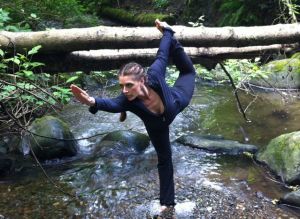We know that life begins with the first breath and ends with the last. But it is how we breathe in between the first and last that greatly impacts how well we live this life.
Nancy Zi, The Art of Breathing
I am often asked, “What’s the best exercise I can do the prepare my body for childbirth?” You might be surprised to learn the answer…it’s not squats, yoga poses, or kegels. Although each exercise plays an important role in a comprehensive prenatal exercise program, diaphragmatic breathing is where we must start. Though it may sound elementary or perhaps overstated, it truly provides the foundation for health.
In our daily lives, many of us are breathing incorrectly, which also means inefficiently. We are breathing with our chests, neglecting our full lung capacity and in many cases, we are breath holding–all of which lead to a cascade of negative effects. We are doing our bodies and minds a disservice by not taking full advantage of all that diaphragmatic breathing has to offer–both physiologically and psychologically.
This post is meant to be easily digestible and practical, to give you the nuts and bolts of diaphragmatic breathing so that you can begin to incorporate the practice into your everyday life right away!
Benefits:
- Considered the most efficient way to breathe as it decreases oxygen demand
- Enhances blood flow to internal organs
- Strengthens the diaphragm
- Assists in moderating cortisol production
- Encourages muscle relaxation throughout body
- Creates a feeling of calm in both mind and body through stimulation of the parasympathetic nervous system
- Through use of active diaphragmatic breathing, the abdominal muscles are strengthened. These are vital for supporting the spine, maintaining proper alignment and to assist with expulsion of baby.
Breathing Assessment:
First and foremost, take notice and assess your current breathing pattern. Sit or stand in front of a mirror and take a deep breath.
What do you see?
Do your shoulders or chest rise? Belly expand? Nostrils flair? Is your mouth open? Closed? Do you momentarily hold your breath at the transition between inhale and exhale?
What do you hear?
What does your breath sound like as it moves in and out of your mouth? Nose? Is it audible? Strained? Uneven?
What do you feel physically?
Scan your body for areas of tightness, tension, resistance. Bring your attention there momentarily.
What do you feel emotionally?
Are you anxious? Heart racing? Thoughts racing? Judging your performance? Putting pressure on yourself?
Let it all go.
Practice Passive Diaphragmatic Breathing:
Starting from a seated position, find stillness and bring awareness to your breath. Relax your jaw, tongue and neck. Lift through your spine, lengthen your neck and release your shoulders. Consciously relax the muscles of the ribcage and spine. Ahhhhhhh. Begin. Inhale through your nose, followed by an exhale through your mouth while letting your diaphragm drop into the abdomen. Practice inhaling and exhaling for two counts each OR for what is comfortable for you, pausing ever so slightly in between the inhale and the exhale. Once you have established a rhythm, stay with your breath for 5-10 cycles.
Practice Active Diaphragmatic Breathing:
Begin in a comfortable seated position with passive diaphragmatic breathing. Place hands on your belly and notice the movement of your abdomen. Follow the sequence above and actively breathe into the belly while inhaling—allowing belly to expand. Conversely, actively pull in the belly while exhaling—allowing belly to contract. Repeat this sequence 10-20x focusing on activation of abdominal muscles.

Diaphragmatic breathing allowed me to stay calm, centered and balanced while standing in ice cold water and balancing barefoot on rocks–ouch!
Additional Tips:
- Begin by practicing in a seated position and progress to standing once you have mastered your seated practice.
- Perform diaphragmatic breathing until it becomes automatic and you no longer need to prompt yourself to breathe in this way.
- Incorporate into activities of daily living and then, while exercising.
- Practice throughout pregnancy and into postpartum for continued benefits.
Final thoughts:
Pregnancy and postpartum can be a very overwhelming time–physically, emotionally, mentally and spiritually. In moments of tension, stress and anxiety, in times of confusion, fear and uncertainty, return to your breath. It is an invaluable and easily accessible tool always at your disposable. As you take that first, deliberate breath, find great comfort in the responsiveness of your mind and body as your heart rate, respirations and thoughts all begin to slow. As you continue to breathe, send lightness and calm to areas of tension, always trusting and respecting the feedback from and the wisdom of your body.
Learn More:
Your interest piqued? Would you like to learn more about the science behind diaphragmatic breathing and have access to additional resources to help facilitate your practice? Check out this blog from Ginger Garner, Physical Therapist & Yoga Instructor. Ginger’s website: www.gingergarner.com
Put your practice into motion! Join me for a one-on-one consultation or group class to help facilitate mindful movement, self-awareness and physical conditioning.
Resources:
Berk, B. (2005). Motherwell Maternity Fitness Plan: The #1 program for healthy mothers and babies. Champaign, IL: Human Kinetics.
